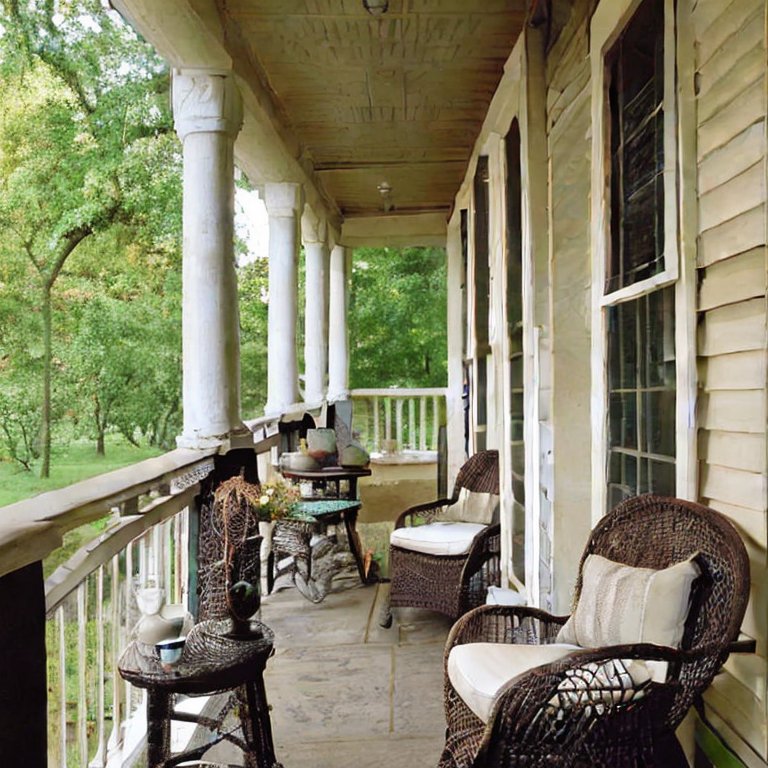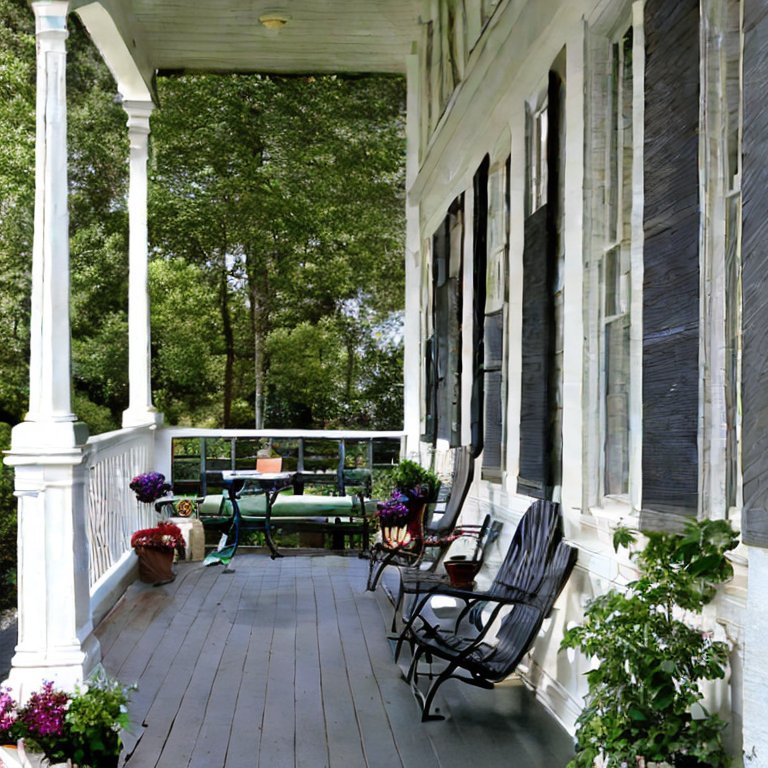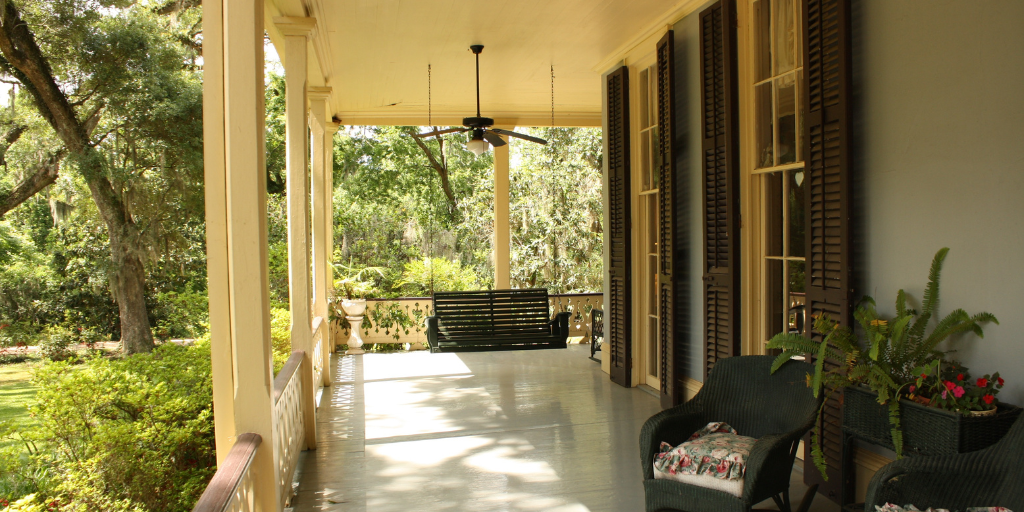Knowing the dos and don’ts of porch maintenance is a great way to save on unnecessary repairs. A porch is an outdoor extension of your home, providing a space for relaxation and entertainment.
However, it’s important to remember that a porch requires regular maintenance to keep it in good condition. In this guide, we’ll discuss the dos and don’ts of porch maintenance, providing homeowners with guidance on how to properly care for their porch.
The Dos of porch maintenance
Contents
Proper maintenance is essential to ensure the longevity and safety of your porch. From regular inspections to cleaning and sealing, there are many actions you can take to keep your porch in good condition. We’ll explore the dos of porch maintenance, providing guidance on what you can do to maintain a healthy and beautiful porch.
Do inspect your porch regularly
One of the most important things you can do to maintain your porch is to inspect it regularly for signs of damage. This includes checking for cracks, rot, and other issues that may compromise the integrity of your porch. Regular inspections can help you catch problems early, preventing costly repairs down the line. Check the following closely:
The foundation: Look for cracks or signs of settling that may indicate a problem with the foundation.
The railing: Check for loose or damaged railing components that may pose a safety hazard.
The flooring: Inspect the porch floor for signs of rot or water damage, as well as any loose or damaged boards.
The roof: Look for signs of wear or damage to the roof, including missing shingles, leaks, or sagging.
By inspecting your porch regularly, you can identify and address problems before they become more serious.
Do repair any damage as soon as possible
If you do find damage during your inspection, it’s important to address it as soon as possible. Small cracks or rot can quickly become larger and more expensive problems if left unchecked. In some cases, delaying repairs can even pose a safety hazard.
When repairing your porch, be sure to use the proper materials and techniques to ensure a lasting repair. For example, if you’re replacing a rotted board, be sure to use a material that is resistant to rot and moisture, such as pressure-treated wood or composite decking. If you’re unsure how to make a repair, consider hiring a professional to ensure the job is done correctly.
Do clear trees and bushes near your porch
Trees and bushes can provide shade and privacy for your porch, but they can also pose a risk if they’re too close. Falling branches or leaves can damage your porch, and overhanging branches can trap moisture against the surface, leading to rot and decay.
To prevent damage from trees and bushes, be sure to trim them regularly, especially if they’re growing close to your porch. Trim back any branches that are overhanging your porch or that may pose a hazard during storms or high winds.
Do clean your porch regularly
Regular cleaning is an important part of porch maintenance, helping to remove dirt, debris, and other contaminants that can damage the surface over time. To clean your porch, start by sweeping away any loose dirt and debris. Then, use a mild detergent and a soft-bristled brush to scrub away any stains or dirt buildup. Rinse the surface with a garden hose or pressure washer, being careful not to use too much pressure, which can damage the surface.
If you have a wood porch, be sure to use a cleaner that is safe for wood surfaces. Avoid using harsh chemicals or abrasive tools, as they can damage the surface of your porch.
Do seal your porch
Sealing your porch is an important step in protecting it from moisture, UV rays, and other elements that can cause damage over time. A good sealant can also help to prevent stains and discoloration, keeping your porch looking like new.
To seal your porch, start by cleaning the surface thoroughly. Then, apply a high-quality sealant according to the manufacturer’s instructions. Be sure to apply the sealant evenly, and avoid applying too much, as this can lead to a sticky or tacky surface.


The Don’ts of porch maintenance
Maintaining your porch is essential to ensuring its longevity and safety. Regular inspection and repair can help prevent costly damage and keep your porch looking its best. However, there are certain actions that homeowners should avoid when it comes to porch maintenance. We’ll explore the don’ts of porch maintenance, providing guidance on what to avoid to keep your porch in good condition.
Don’t use harsh chemicals
When cleaning your porch, it’s important to avoid using harsh chemicals, such as bleach or ammonia, as they can damage the surface of your porch. Instead, use a mild detergent and a soft-bristled brush to scrub away dirt and stains. If you need to remove stubborn stains, consider using a specialized cleaner designed for your porch material.
In addition to cleaning, it’s also important to avoid using harsh chemicals for other purposes, such as removing ice or snow. Salt and other ice-melting chemicals can damage the surface of your porch, leading to cracks and other issues.
Don’t ignore drainage issues
Proper drainage is essential for maintaining the health of your porch. If water is allowed to collect on the surface of your porch, it can seep into the underlying material, causing rot, mold, and other issues.
To ensure proper drainage, make sure that your porch is sloped away from your home. This will help to direct water away from the surface of your porch and prevent it from pooling. If you notice water pooling on your porch, consider installing a drainage system, such as a French drain or a gutter system.
Don’t overload your porch
Your porch is designed to support a certain amount of weight, and overloading it can cause damage or even collapse. Avoid placing heavy furniture or other objects on your porch that may exceed its weight capacity. If you’re unsure about the weight capacity of your porch, consult a professional to ensure that it’s safe for your intended use.
Don’t paint over rot or damage
Painting over rot or other damage may seem like a quick fix, but it’s not a long-term solution. In fact, painting over damage can actually make the problem worse by trapping moisture against the surface and preventing it from drying out. If you notice any signs of rot or other damage during your inspection, be sure to address them before painting or staining your porch.
Final thoughts on the dos and don’ts of porch maintenance
In conclusion, the dos and don’ts of porch maintenance is key to ensuring the longevity and safety of your porch. By following these tips, you can keep your porch in good condition and prevent costly repairs down the line.
Remember to inspect your porch regularly, repair any damage promptly, and avoid using harsh chemicals or overloading your porch. With a little effort and attention, you can enjoy your porch for years to come.






